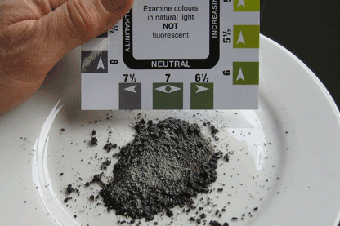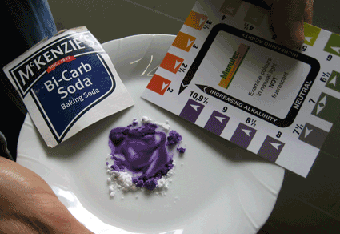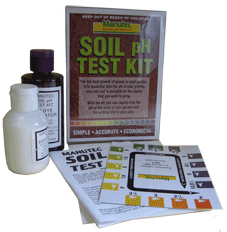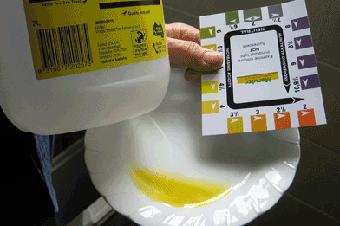| Organic Seeds | Edible Plants | Organic Pest Controls | Books | Tools, Propagation & Fertilisers | Sprouting & Microgreens | Poultry Supplies | Specials & Gift Ideas |

Top

We will send an email to this address*
when is next available
* we will use this email address only for this notification and then we will delete it.
 Home
Home
Green Harvest Organic Gardening Supplies is permanently closed as of 5pm on 1-11-2023.
We will not be taking orders by this website, in person, by phone or email. Our display garden and retail shop are closed forever.
Read more...
Phone:07 54357000
Phone calls will only be responded to sporadically and only in reference to orders placed prior to 2-11-2023. All the useful growing and organic pest management research and resources are available on this website for a while still.
Understanding Soil pH © Frances Michaels
Raising pH
Lowering pH
 On very poor soils it may be difficult to grow anything, including even a successful green manure crop. In this
case the pH should be tested for excessive acidity or alkalinity, as this will interfere with uptake of nutrients
by plants. pH is a measure of the acidity and alkalinity of the soil using a scale from 1 to 14; where 7 is
neutral, less than 7 is acid and greater than 7 is alkaline.
On very poor soils it may be difficult to grow anything, including even a successful green manure crop. In this
case the pH should be tested for excessive acidity or alkalinity, as this will interfere with uptake of nutrients
by plants. pH is a measure of the acidity and alkalinity of the soil using a scale from 1 to 14; where 7 is
neutral, less than 7 is acid and greater than 7 is alkaline.
Fresh, clean water is neutral with a pH of 7, vinegar or lemon juice is very acid with a pH of 2.6 and baking soda is very alkaline with a pH of 8.5. It is important to remember that pH is a logarithmic scale, so the difference between a pH of 7 and a pH of 6 is 10 times the acidity, between 7 and 5 is a 100 times the acidity and between 7 and 4 is a 1000 times the acidity so it is obvious that this will have a major impact on the ability of plants to grow.
pH is used as an indicator of the availability of other nutrients in the soil but only hydrogen ions are actually measured.
Acid soils with a pH of less than 6 commonly have deficiencies in:
Raising pH
If the soil is too acid, then agricultural lime (calcium carbonate) should be applied. The amount needed will vary depending on the pH and the soil type. As a rough guide apply 120 g/m2 to a clay soil and 30 g/m2 to a sandy soil. Test again in a few months and apply more if necessary. Agricultural lime is cheaper to buy than dolomite (a mixture of calcium carbonate and magnesium carbonate). Dolomite is only a good idea if your soil is deficient in magnesium. For example, many of the acid soils in SE QLD are already too high in magnesium, adding more is a waste of money and can cause the ratio of calcium to magnesium to be out of balance.
Lowering pH
Sulphates of iron and ammonium, elemental sulphur and organic matter are used to lower the pH (increase acidity) of the soil, when necessary.
Gypsum (calcium sulphate) does not alter the pH of the soil but can improve aeration and reduce compaction in a clay soil.
The texture of the soil e.g. clay or sand and the amount of organic matter present will affect the quantity of material needed to alter the pH. Clay soils need a much greater amount of lime to shift the pH than sandy soils.
The addition of organic matter is always beneficial to the soil whether added as manure, compost or by green manuring. Organic matter will generally 'buffer' plants against the impact of acidity so that a soil with a lower pH range will still successfully grow plants.
Plants vary in their desired pH range and this is to with the pH of the soil type they evolved in. For example lavenders are native to the limestone soils of the Mediterranean and so prefer an alkaline soil.
The following table sets out the amount of lime needed to raise the pH of different types of soils.
From RW Pearson and F Adams (eds) 'Soil Acidity and Liming':
 Soil pH Test Kit
Soil pH Test Kit
pH test kits are easy to use and all gardeners should have one. This is the only reliable soil test you can do at home.
More information on mulch
More information on organic soil improvement
More information on cover crops and living mulch
More information on green manure
Warm season green manure seeds and kits
Cool season green manure seeds and kits
 On very poor soils it may be difficult to grow anything, including even a successful green manure crop. In this
case the pH should be tested for excessive acidity or alkalinity, as this will interfere with uptake of nutrients
by plants. pH is a measure of the acidity and alkalinity of the soil using a scale from 1 to 14; where 7 is
neutral, less than 7 is acid and greater than 7 is alkaline.
On very poor soils it may be difficult to grow anything, including even a successful green manure crop. In this
case the pH should be tested for excessive acidity or alkalinity, as this will interfere with uptake of nutrients
by plants. pH is a measure of the acidity and alkalinity of the soil using a scale from 1 to 14; where 7 is
neutral, less than 7 is acid and greater than 7 is alkaline.Fresh, clean water is neutral with a pH of 7, vinegar or lemon juice is very acid with a pH of 2.6 and baking soda is very alkaline with a pH of 8.5. It is important to remember that pH is a logarithmic scale, so the difference between a pH of 7 and a pH of 6 is 10 times the acidity, between 7 and 5 is a 100 times the acidity and between 7 and 4 is a 1000 times the acidity so it is obvious that this will have a major impact on the ability of plants to grow.
pH is used as an indicator of the availability of other nutrients in the soil but only hydrogen ions are actually measured.
Acid soils with a pH of less than 6 commonly have deficiencies in:

- Calcium
- Magnesium
- Phosphorus
- Potassium
- Molybdenum
- Aluminium
- Manganese
- Iron
- Manganese
- Zinc
- Copper
- Boron

Raising pH
If the soil is too acid, then agricultural lime (calcium carbonate) should be applied. The amount needed will vary depending on the pH and the soil type. As a rough guide apply 120 g/m2 to a clay soil and 30 g/m2 to a sandy soil. Test again in a few months and apply more if necessary. Agricultural lime is cheaper to buy than dolomite (a mixture of calcium carbonate and magnesium carbonate). Dolomite is only a good idea if your soil is deficient in magnesium. For example, many of the acid soils in SE QLD are already too high in magnesium, adding more is a waste of money and can cause the ratio of calcium to magnesium to be out of balance.
Lowering pH
Sulphates of iron and ammonium, elemental sulphur and organic matter are used to lower the pH (increase acidity) of the soil, when necessary.
Gypsum (calcium sulphate) does not alter the pH of the soil but can improve aeration and reduce compaction in a clay soil.
The texture of the soil e.g. clay or sand and the amount of organic matter present will affect the quantity of material needed to alter the pH. Clay soils need a much greater amount of lime to shift the pH than sandy soils.
The addition of organic matter is always beneficial to the soil whether added as manure, compost or by green manuring. Organic matter will generally 'buffer' plants against the impact of acidity so that a soil with a lower pH range will still successfully grow plants.
Plants vary in their desired pH range and this is to with the pH of the soil type they evolved in. For example lavenders are native to the limestone soils of the Mediterranean and so prefer an alkaline soil.
The following table sets out the amount of lime needed to raise the pH of different types of soils.
From RW Pearson and F Adams (eds) 'Soil Acidity and Liming':
| Soil Texture | pH 4.5 to 5.5 | pH 5.5 to 6.5 |
| Sand, loamy sand | 85 g/m2 | 110 g/m2 |
| Sandy loam | 130 g/m2 | 195 g/m2 |
| Loam | 195 g/m2 | 240 g/m2 |
| Silty loam | 280 g/m2 | 320 g/m2 |
| Clay loam | 320 g/m2 | 410 g/m2 |
 Soil pH Test Kit
Soil pH Test KitpH test kits are easy to use and all gardeners should have one. This is the only reliable soil test you can do at home.
More information on mulch
More information on organic soil improvement
More information on cover crops and living mulch
More information on green manure
Warm season green manure seeds and kits
Cool season green manure seeds and kits
 Home
Home
Green Harvest Organic Gardening Supplies is permanently closed as of 5pm on 1-11-2023.
We will not be taking orders by this website, in person, by phone or email. Our display garden and retail shop are closed forever.
Read more...
Phone:07 54357000
Phone calls will only be responded to sporadically and only in reference to orders placed prior to 2-11-2023. All the useful growing and organic pest management research and resources are available on this website for a while still.
No liability will be accepted by Green Harvest, its owners or employees as to the accuracy of any information. No responsibility will be taken for damage to property or persons due to information given about a product or technique. No responsibility will be taken for the loss of a crop or income due to information given about a product or technique.
 Shopping here is private and secure.
Shopping here is private and secure.
Copyright © 2001 - 2024 Green Harvest Organic Gardening Supplies
No part of this website may be reproduced without permission of the owner